Holden Safaris welcomes you to Namibia - remote and uncrowded and home to spectacular wildlife, from small herds of desert dwelling elephant that survive against the odds in the northwest to the largest population of elephants left on earth that move through the Kavango-Zambezi Transfrontier Park; lions that prowl the coastline; the world’s largest population of black rhino, and countless other species from big to small, prolific to endangered; each an important part of our natural world.
Namibia is also home to the world's oldest desert; includes 30 languages spoken in the country; has some of the highest sand dunes in the world; boasts one of the largest concentrations of rock art in Africa and has the largest population of free-roaming cheetahs in the world: home to the second largest canyon in the world - the Fish River Canyon: the most fascinating Namibia Tribes with the Skeleton Coast being the world's biggest gravesite for sailors and ships:
SUMMARY OF INFORMATION IN THIS ONLINE DIGITAL ITINERARY
To make full use of this online digital itinerary, please refer to each of the “Tabs” at the top of the Overview page which provide all the information you need for your safari, as summarized below:
- Overview page: A Day-to-day summary of the itinerary.
- Destinations: Description of the various places you will visit during your safari in Namibia
- Accommodation: Images and information of hotels/lodges/and camps where you will stay including room type
- Daily Information: Detailed day to day schedule with timings and activities, inclusions and exclusions
- Map: Virtual interactive map showing your route.
- Transport: Summary of your flights and road transfers in Africa.
- Information: Summary of country information (Namibia)
- Documents: Helpful information specific to your itinerary provided by Holden Safaris together with Holden Safaris Terms and Conditions
- Contact Us: Holden Safaris contact details
ITINERARY SUMMARY
- 3 Nights at Sossusvlei
- Sossusvlei is a large salt and clay pan, situated in the southern region of the Namib Desert. Undoubtedly Namibia’s most iconic landscape; the rust-red dunes, bleached white pans and deep blue sky are instantly recognisable, and symbolise the country’s vast, dry, uninhabited expanses.
- 3 Nights in the Damaraland region at the Desert Rhino Camp
With its ancient water courses, open plains grasslands, stacked granite rocks and deeply carved gorges, the region is marked with simple beauty, arid-adapted wildlife and the largest free-roaming black rhino population in Africa. Remote and exclusive, the camp runs in conjunction with the Save the Rhino Trust – contributing to the sustainability of the area and its inhabitants.
Set out on a full-day safari, driving through the vast area to catch glimpses of elephant, gemsbok, giraffe, and Hartmann’s mountain zebra as well as the stalking predators such as lion, cheetah, leopard and hyena. Bushwalks centre on the humble fauna and flora that survive the incredibly harsh environment. Track rhinos on foot, following in their odd-toed footprints alongside professional guides.
The Etendeka Mountains set the backdrop for the eight raised Meru-style standard tents, each featuring an en-suite bathroom. The canvas tents open onto a verandah overlooking the dramatic landscape, speckled with euphorbia and welwitschia plants. Evening meals are served in the tented dining and lounge area, which is raised on a wooden deck.
- 3 Nights at Hoanib Skeleton Coast
The name Skeleton Coast derived most probably from the huge numbers of stranded whales that lost their life here and whose skeletons could be seen all over the place. The Ovahimba tribe who are settling in the far north-eastern parts of Namibia used the whale bones for building their huts.
Numerous ships have stranded at the Skeleton Coast thanks to the thick fog, the rough sea, unpredictable currents and stormy winds. The sailors who were able to make it to the land did not stand a chance of survival at this inhospitable coast and died of thirst.
Despite the hostile character of the Skeleton Coast, there are quite a number of wild animals to observe, for example desert-adapted elephants, rhinos, desert lions, brown hyenas, jackals, giraffes, seals, oryx, kudus and zebras. Also some plants are incredibly adapted to the rainless area of the Skeleton coast and depend solely on the daily fog from the Atlantic Ocean: There are welwitschias, !Nara melons, several lithops succulent plants (often called “living stones”), lichen and pencil bush (ink bush)
- 3 Nights at Ongava Game Reserve : Tented Camp / Adjacent to the Etosha National Park
- Ongava’s proximity to Etosha allows for game drives in the Etosha National Park and on the Ongava Reserve itself. Other possibilities include guided walks, birding and visiting hides. Ongava holds one of the largest rhino custodianships for the Namibian government in the country and is one of the few private game reserves in southern Africa where guests can see both black and white rhino.
Etosha means the” great white area” and refers to the huge salt pan. This is an impressive sight because it’s certainly the biggest salt pan in Africa.
Subsequently, when it rains, the water pools in the pan and attracts hundreds of thousands of flamingos!
Soft air, crackling with bird song and a chorus of lion roars, this is just a small, spectacular part of the Ongava Game Reserve experience. Rhino approaching on foot, game drives into the fabled Etosha National Park, nights spent around the fire, watching as some of the world's most illusive and endangered animals drink at at subtly lit waterholes. This is your chance to be immersed in the wild.
With an intimate knowledge of the land and its wildlife, including 100 different mammal species found at Ongava, yhe guides share their understanding and love of the wild. Their passion for the wild is contagious, helping our guests to create a renewed sense of wonder and a wealth of unforgettable memories.
Departure
After breakfast at the Ongava Tented Camp, you will be collected at the camp by your driver / guide in a 4 x 4 vehicle
Depart the camp and transfer by road to Windhoek International Airport
This is approximately a 4hr30min drive with some spectacular sights on the way (you will make a few stops en route to Winhoek)
On arrival at Windhoek Airport you will be assisted with check - in with your connecting departure flight.
|
day 0 |
Wilderness Little Kulala | Sossusvlei |
3 nights |
FB |
|
day 3 |
Wilderness Desert Rhino Camp | Palmwag |
3 nights |
FB |
|
day 6 |
Wilderness Hoanib Skeleton Coast Camp | Hoanib River |
3 nights |
FB |
|
day 9 |
Ongava Tented Camp | Ongava Private Game Reserve |
3 nights |
FB |
|
FB: Full Board - Dinner, Bed, Breakfast and Lunch |
|

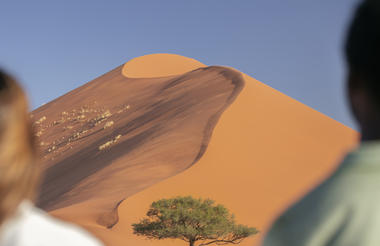
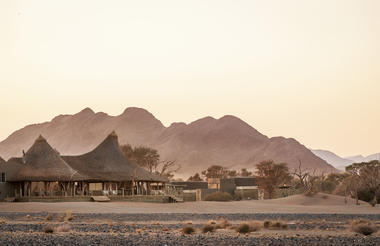
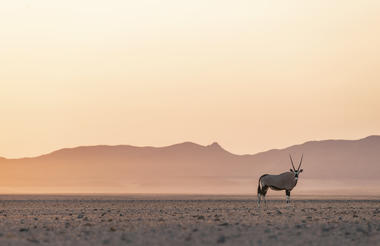









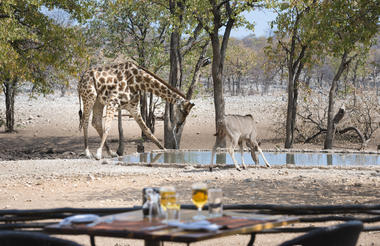
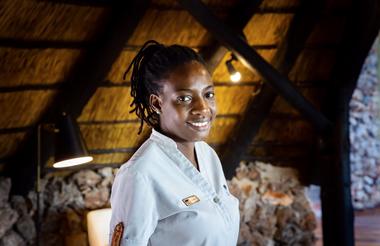
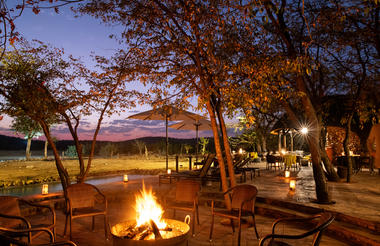
13 Days / 12 Nights



















